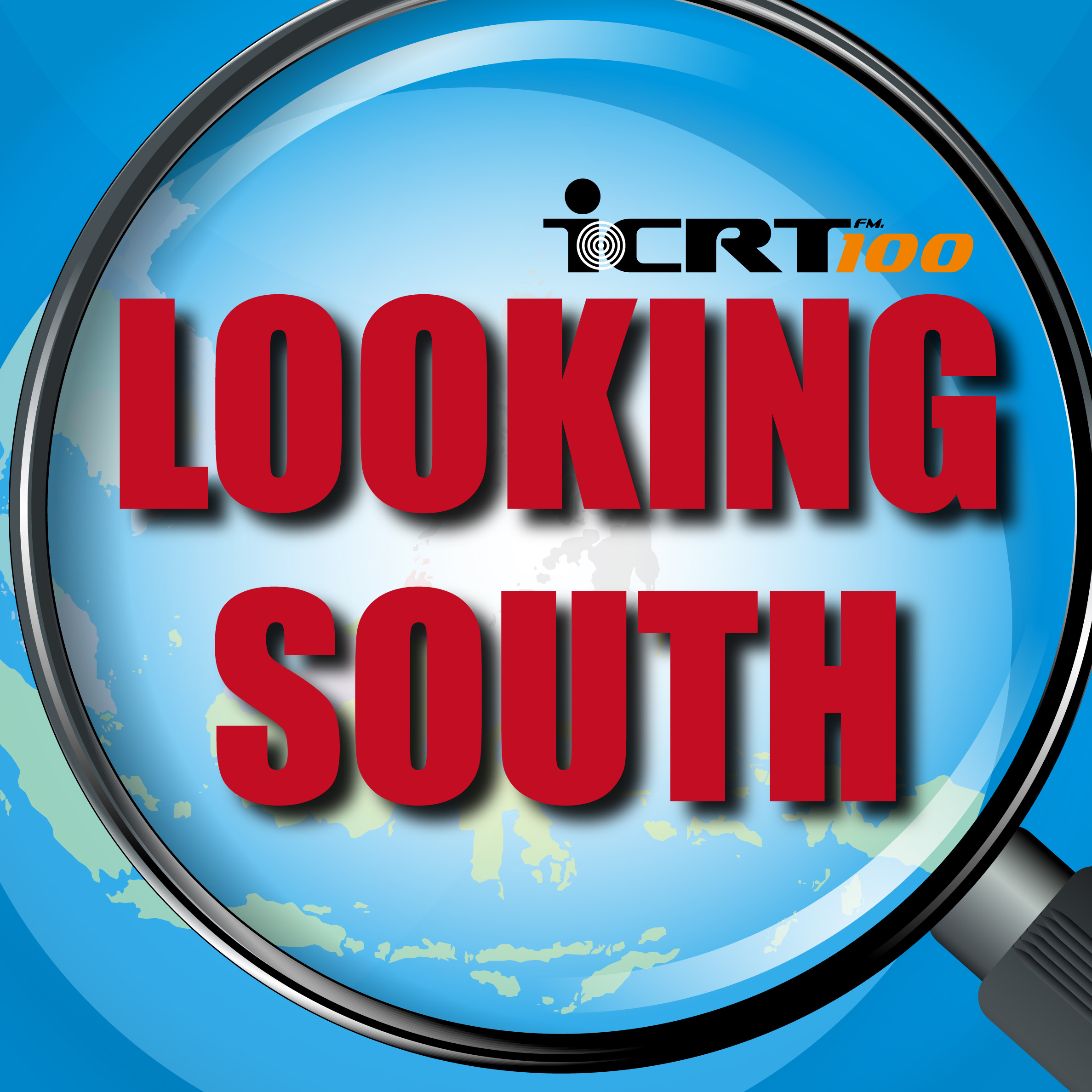Launching a new season of Looking South, Eric Gau is once again joined by Simon Wang, executive vice president of TAITRA. This time, the two discuss business exchanges between Taiwan and New Southbound Policy Target Countries.
Transcript:
Eric Gau: Hello everyone, and welcome back to Looking South, ICRT’s program dedicated to exploring the government’s New Southbound Policy and its effects both at home and abroad. Today, we’ll be looking at business exchanges conducted under the Policy. To tell us about that, we are rejoined by longtime friend of the program, Taiwan External Trade and Development Council Executive Vice President, Mr. Simon Wang. Mr. Wang, welcome back to the program.
Simon Wang: Thank you, Eric. Thanks for having me.
Eric: To start us off, why don’t you tell us the role that TAITRA has been playing under the government’s New Southbound Policy.
Simon: Yes, we play the role of ‘eyes and ears’ for companies. For example, we help collect market information, including target nations’ policies, rules and regulations, city information geographic-wise, and industry information, and even consumer behavior. And also cultural differences. And then we help watch where exists market opportunities, doing market surveys, big data analysis, and we also have a couple of offices in New Southbound countries, 12 offices. These offices also play the role of ‘eyes and ears’.
Eric: How has TAITRA been fostering business exchanges between Taiwanese companies and their counterparts in these target countries?
Simon: We can look at this issue from two sides. One is inbound; we invite target audience, either buyers or sellers or companies that would like to partner with Taiwan, to come to Taiwan to seek for business opportunities, or we will help to arrange for site visits and to have one-on-one business meetings. We have a lot of projects like Southeast Asia Business Day, South Asia Business Day, these kinds of projects. And also industry cooperation is also what we would like to focus on. Taiwan has very well-founded industry clusters, such as machine tools in Taichung, plastic industry in Tainan, ICT in Hsinchu. We organize around 40 Taiwan International Trade Shows, and some of those trade shows are internationally known and also are good platforms for New Southbound countries’ companies who would like to seek cooperation can visit or to join to exhibit their products in ICT trade fairs like COMPUTEX and the Food Show, which is also very popular, and the Bicycle Show and so forth. That’s one side. Another aspect is the outbound side, like we organize the Taiwan Expo in Vietnam, in Indonesia, in Thailand, in Southeast Asian nations. We also have projects called image enhancement projects which is to help communicate how Taiwan will be perceived in the eyes of the target audience. We also have consultation services and Taiwan products promotion center, which helps companies tailor-make their products’ promotion projects, to even employ sales rep for them in the target country. Another aspect is on the virtual side, not in the so-called ‘brick and mortar’ field. The virtual side is e-commerce. We help companies enter into the market by way of e-commerce platforms, such as in Indonesia, we have entered into alliance with Blibli, in Vietnam Tiki, in India Trade India. These kind of electronic commerce platforms, the companies can utilize the platforms to market their products.
Eric: Mr. Wang, could you give us any examples of cooperation that you feel have been exceptionally successful since the Policy was put in place?
Simon: Yes, TAITRA has put a lot of effort in helping countries explore opportunities in India. One of the very good examples is that we helped CTCI, a leader in engineering services from Taiwan, obtain a project of $240 million US dollars. The project was about building a natural gas receiving station. This is a very good, flagship example. Another example is we helped Taiwan Beer, and another well-known brand of whiskey, called Kavalan, enter into Vietnam and Cambodia market. In Vietnam, if we export beer from Taiwan to Vietnam, the tariff will be 35%. So we helped them to enter into the market in another way, which is to find a subcontractor to manufacture beer in Vietnam, that would cost less than half of the price. So this is a very successful case. We organize other image fairs, Taiwan expo, and another very good outcome is we organize Taiwan Expo, and then we get Indonesia or Myanmar to have their solo show in Taiwan in return. I think this is a very good outcome that is a kind of two-way communication, instead of only unilaterally one-way, from Taiwan to the New Southbound countries.
Eric: What can other companies learn from these examples about how to work with firms from neighboring countries effectively?
Simon: I think for our companies who haven’t been able to enter into the market, what we can learn is that we have to be humble, to learn to have the mindset of humbleness. New Southbound Countries include 18 countries, that can be split into 3 parts: Southeast Asia, South Asia, and more developed countries like Australia and New Zealand. And in Southeast Asia you can also divide into three parts: first tier is Singapore and Brunei, and then second Thailand and Malaysia, and thirdly is what we call CLMV, by their economic development. They constitute very different economies, not to mention their religion, language, different markets, different cultures, different consumer behaviors. We have to be very humble and not to take them as a whole. We have to understand deeper what they represent. Number two is we have to know that netizens nowadays are getting more and more important. Netizens have a size of about 260 million in Southeast Asia, and according to the World Bank, the monthly increase is 3.8 million netizens. But even with such a rapid development, but the penetration rate is less than 16 percent. And electronic commerce accounts for total retail sales’ merely 1% to 5%. Do you know what the percentage is in Taiwan? 17%. It means that the room for growth is very huge. Number three is that we need to have the idea of ‘grow together’. The mindset of ‘together’ that is very important to pursue the better life, we have to grow together which means we need to foster business interchanges that are two-way, instead of only to sell. That’s what we need to learn.
Eric: Mr. Wang, before we go, what will TAITRA be doing in the future to further spur business exchanges? How will its efforts expand or adapt from what you’re doing now?
Simon: I think we, in the future, what we need to adapt is a couple of aspects. Number one is we need to do it in-depth. Now, the spectrum is wide. Next, I think to do it deeper, in-depth, more focused. For now, we organize our Taiwan Expos in capital cities. In the future, probably we could go to second tier, third tier cities. To tailor-make our promotional projects, to meet the needs of our target countries. And second is we should probably think about some sort of flagship projects, like petrochemical projects we are working on. And thirdly is, I mentioned earlier, we need to do something more bilateral, projects or any kind of arrangement. So two-way communication is what we need to do more of in the future. We have to make use of Taiwan’s soft power, such as the agricultural industry, education, and medical care, is very important for Taiwan to have some kind of business exchanges with our target countries.
Eric: We’ve been chatting with Simon Wang, TAITRA executive vice president. Mr. Wang, thank you again for joining us here on ICRT.
Simon: Again, thank you, Eric.
Eric: And that wraps up this episode of Looking South. Join us again next Monday for the next installment, or head over to the ICRT web page for past episodes. I’m Eric Gau, and thank you all for tuning in.

